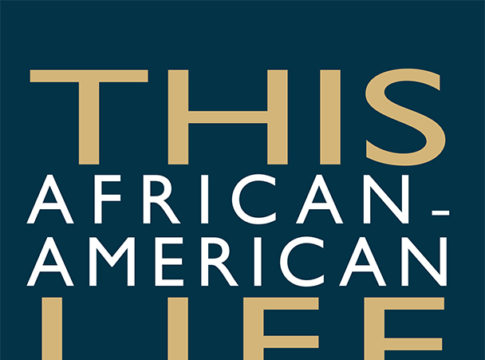In an excerpt from his new memoir Madison Park: A Place of Hope, Eric L. Motley describes childhood in the 1970s and 1980s in a small community founded by freed slaves in Alabama. Even as he was bused to an elementary school forty-five minutes away as part of Montgomery’s integration efforts, his friends and neighbors in Madison Park banded together to support him at every stage of his learning process and help him excel academically.
 The November afternoon that I brought home a letter from my first grade teacher, Mrs. Heikamp, Mama was so alarmed she immediately called Aunt Shine.
The November afternoon that I brought home a letter from my first grade teacher, Mrs. Heikamp, Mama was so alarmed she immediately called Aunt Shine.
“We’ve got a problem,” Aunt Shine agreed.
She hung up the phone, came to our house, and delivered a stern lecture to me about my “unacceptable” performance. The idea was woven into our everyday conversation: “Is that going to help you prepare for college . . .”; “you need to do that if you want to go to college . . .”; “you need to start saving for college . . .” With so much reinforcement, I couldn’t help but make this my overriding goal. Everyone in Madison Park knew of the Motleys’ dream for their little boy—and my plan to fulfill it.
In church the next Sunday, Aunt Shine suddenly stood, asked the pastor for permission to speak, looked out over the congregation, and announced: “Brothers and Sisters, we have a serious problem. Little Eric Motley has been moved from the Rabbits to the Turtles. Any books you’ve finished reading, please bring by George and Mossy’s house. Little Eric doesn’t have a library; and he needs to practice.”
Everyone turned to look at me. I was mortified by the unwanted attention. But within a few hours, community folks started dropping by until soon our porch looked as if we were having a paper drive. There were 1945 Life magazines and a few way-back issues of Jet bundled together. I had Encyclopedia Britannica, Volume “L,” 1932 edition, and a Farmer’s Almanac predicting the weather for each day of 1948. Someone brought a dilapidated volume of Gwendolyn Brooks’s poetry, powerful and impressive even absent a cover and half its pages. There was a volume of English verse—the poems of Keats, Tennyson, and Wordsworth. Talk about eclectic.
Learning was taken seriously in Madison Park. Too many older citizens had been denied the advantages of a formal education and exposure to the arts and ideas. Perfect attendance in school was expected. Only fever-induced delirium warranted an absence. When the Madison Park School was functioning, the teachers, who were neighbors and fellow parishioners, were a part of the community and enjoyed a relationship socially and civically with parents, and the sentiment continued in my day: parent-teacher conferences, PTA potlucks, plays, and pageants were must-attend events. And Mama and Daddy exhibited a far greater level of engagement and oversight of my academic performance than most.
With my low marks in reading identified and books and periodicals at hand, Aunt Shine mobilized a volunteer corps of six ladies, all of whom had been retired from teaching for fifteen to twenty years. All descendants of Eli Madison, the group included the same women who’d taught me Madison Park’s history at the cemetery. A rotating team of two came by our house every afternoon to coach, drill, and encourage me. They didn’t stop at reading. They must have figured while they were at it, why not tutor me in math too?
A couple of months in, Mrs. Frankie Lee Winston recognized that if I were falling behind in my studies, there had to be other kids in the community as bad off—or worse—than me. With a few small donations from townspeople to buy workbooks, flash cards, and other materials, they started a community-wide tutorial program in the back hall of our church to lift up Madison Park’s children. Every weekday from four to five o’clock in the afternoon for more than two years about sixty boys and girls—Methodists, Baptists, Church of Christ, and Seventh-day Adventists—came to sit at the elbows of the all-volunteer staff.
Aunt Shine began every afternoon with the Lord’s Prayer, the Apostles’ Creed, the Twenty-Third Psalm, the Pledge of Allegiance, the Preamble to the Declaration of Independence, and James Weldon Johnson’s famous negro national anthem “Lift Every Voice and Sing.” These were words to live by. They informed our lives and reminded us of our heritage and sense of belonging. Too important to be read, they had to be memorized, an underpinning of classical rhetoric and practice used among American slaves who weren’t allowed to read. The women didn’t have the benefit of research on the importance of oral reading and recitation, but their instincts were perfect. Memorization became an important part of my life. To this day I rely on passages I committed to memory then.
Helping their young charges imagine possibilities was also one of the keystones of their tutoring. One day, Aunt Shine asked us, “What did George Washington do?”
A dozen hands went up. She called on one boy, who stood and replied, “George Washington cut down the cherry tree!”
“No, no, no!” she answered, her voice rising in frustration. “George Washington did not cut down the cherry tree! He led this country through the American Revolution. He refused a crown and became our first president. That is important to remember! Maybe one day one of you will become the president of this country.”
Pausing for emphasis, she added, “But only if you are educated.” The next day she asked, “Who is Harriet Tubman?”
Every day she asked about a different person to be celebrated for his or her contribution to America or to the world. Those ladies, showing us heroes and heroines and bending over us patiently to check our work as we sat around long Sunday school tables, were lifting us to higher places. They knew the benefits: a generation of children elevated out of their circumstances.
Aunt Shine and her female relatives had seen their educational mission upended by the U.S. Supreme Court’s unanimous 1954 decision in Brown v. Board of Education, which ruled that separate educational facilities for blacks and whites were “inherently unequal” and demanded that schools be racially integrated. But the road to integration was rough. In 1963, Alabama’s then-Governor, George Wallace, barred the door to two African American students at the University of Alabama in Tuscaloosa, just seventy-eight miles from Madison Park, standing down only after President John F. Kennedy called out the Alabama National Guard.
Wallace wasn’t the only one against mixing white and black children in school. Aunt Shine and other Madison Park elders feared that forced integration would destroy their model of community-based education, which assured that every student was taught by someone who knew his or her background, parents, and family situation. Given that blacks and whites in the South lived separately, integration required transporting students to schools outside their neighborhoods. While elsewhere busing might have helped achieve greater diversity, Madison Park’s citizens had felt insulated from the abuse of segregation common beyond their boundaries. Thus, they feared that the stability they’d achieved, while not perfect, might be better than the unknown. Aunt Shine once told me, “No one cared for our poor students like we did.”
In the pre-Brown days, and long before schools offered free breakfast and lunch, the teachers often fed their hungry students. When boys and girls came without winter coats, they bought them clothes.
When kids didn’t come to school, the teachers went out looking for them. They were in and out of students’ homes and ran into them at church, ball games, and at Mr. June Jackson’s grocery store. Fearing this spirit of community would be lost, they also feared the children would be failed by a system based on statistics instead of relationships.
But the law was the law. By the time I entered first grade in 1978 all of Madison Park’s students were being bused to mostly white public schools to achieve racial balance in Montgomery. The old Madison Park School was converted into a county-run school for physically and mentally ill children, and instead of a ten-minute walk from 34 Motley Drive, the fifteen-mile trip to Dozier Elementary took forty-five minutes each way.
I loved riding the bus. I thought it was an adventure. It opened up new vistas of Madison Park to me, yet unknown, due to the limited bike route that was prescribed to me by Mama and Daddy. I got to know the community better, at least by sight, and daily chronicled in my mind and journaled all the changes that were taking place—house repairs, newly planted trees, or freshly paved roads.
I thought of my demotion to the Turtles as my fall from grace. But unlike Adam and Eve, I left paradise only temporarily. Along with Aunt Shine’s volunteer squad, two first-grade teachers staged an intervention. Mrs. Dorothy Thomas and Mrs. Mary Smith spent extra time with me on reading and suggested to Mama and Daddy that I repeat the year to lay a firm educational foundation. I was embarrassed and took this to mean that I wasn’t as smart as everyone believed. Worse, I was sure that my intellectual shortcomings would sidetrack my aspirations for college. In retrospect, it’s hard to imagine a six-year-old child consumed with worry about the future, but the circumstances of my childhood quickened my maturity.
Mrs. Dorothy Thomas, in particular, was instrumental to my turnaround. Tall and naturally pretty, she took a Southern woman’s pride in her appearance, heightening her good looks with lipstick, pink blush, and gardenia perfume. Mama would say, paradoxically, “She was born that way and self-made that way.” She was the first black woman I met with freckles, accentuated by her rouged cheeks. When she talked, she got right into your face and left you no personal space. During these frequent, uncomfortable encounters, I would count her freckles. When the good Lord publishes “The Best Teachers of Eternity,” Mrs. Thomas’s name is sure to top the list. She was strict but fair and resolute. She wanted me to succeed in school—and in life.
Mrs. Thomas represented the ideal that many Madison Park educators believed was in peril after integration in the South. She was among the African American teachers to integrate the Montgomery Public School system, and Madison Park seemed to have had the highest concentration of blacks transferred to Dozier Elementary. I knew she empathized with children who were bused into the city, but I never saw her show preferential treatment to black students. Just the opposite—she demanded even more from us.
When I was in third grade, Mrs. Thomas made a bold stand against what she perceived to be racial discrimination against me. Every day, my white teacher, whom I will call “Mrs. Joy,” asked for volunteers to help her clean the classroom after school. I eagerly raised my hand to sweep the floor and erase the chalkboard. I never thought anything of it, but if I had, I would have noticed that all of the volunteers were African American kids from Madison Park.
One day, having heard that I was one of Mrs. Joy’s cleaners, Mrs. Thomas bolted into the classroom, grabbed the broom from my hands, and sent it sailing into the closet before pulling Mrs. Joy aside for a private conversation.
Next, she led me by the hand to her room and sat me down. Still holding my hand, she said, “Your grandmother didn’t send you to school to clean anybody’s floors. Do you hear me? You’re here to get an education, and every single second of your day you had better be learning what you don’t know. If I ever see you cleaning someone’s room again, I’ll tear you in two. Do you understand?”
“Yes, Ma’am,” I said.
“I’m not mad at you,” she said, squeezing my hand. “I just love you.”
Eric L. Motley is an executive vice president at the Aspen Institute.
Taken from Madison Park by Eric Motley Copyright © 2017 by Eric Motley. Used by permission of Zondervan. www.zondervan.com.





